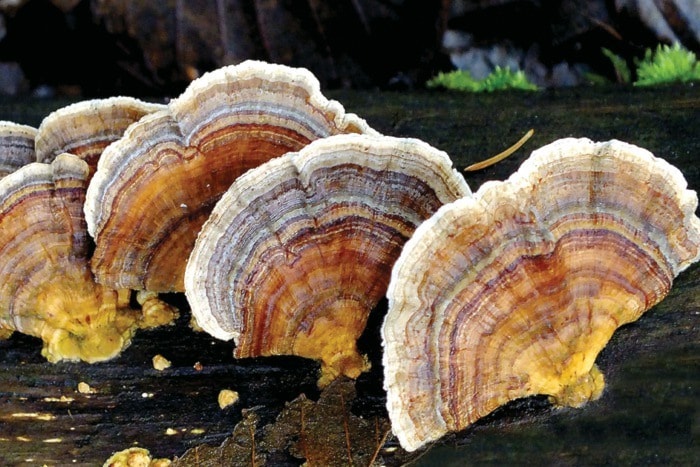Jiggly little jellies and wavy turkey tails; few would think to find them on springtime nature walks.
Yet they are among a handful of fungi at their loveliest in late March, proving that Vancouver Island’s mushroom season is not merely relegated to autumn.
The Pacific Northwest has a short but fascinating spring mushroom season, when a handful of fungi ‘spring’ to life with melting, warming days and cool nights.
It helps to remember that the visible part of a mushroom plant is the organism’s ‘fruit’, like an apple on an apple tree, and that the main structure – mycelium – lies beneath the surface.
Colourful and filled with moisture, jelly fungi are a fun find on a cool springtime stroll. Golden jelly cone (Guepiniopsis alpines), forms small, conical caps of gelatinous flesh up to one inch (2.5 cm) wide. This bright species can be plentiful during or following snow melt. Look for it on decaying wood, stumps and branches.
With such small prey, a magnifying lens greatly increases enjoyment on a mushroom hunting expedition.
Larger and stronger, the turkey tail polypores bring brightness to winter-weary woodlands, their wavy, concentric patterns true eye candy, with colourful banding in earth-tones. Ranging in size from tiny to four inches (10 cm) across, this mushroom may revive during other seasons but is freshest in springtime.
Chanterelles and boletes may dominate September, but spring’s ‘fun guys’ are equally delightful. During April, look for other early bloomers, including oyster mushroom, sulphur shelf, glistening inkcap, and velvet foot.
E-mail Christine with photos or comments at: wildernesswest@shaw.ca.
